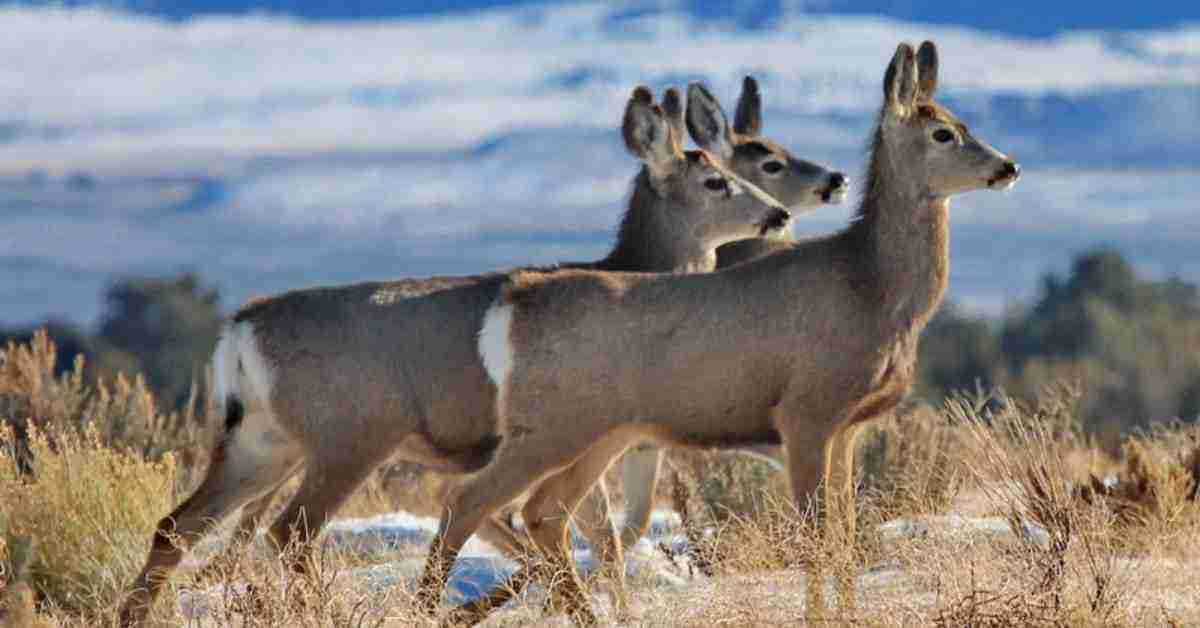Whether you’re a wildlife enthusiast, an avid hunter, or a curious wanderer, you’ll surely find different types of deer interesting.
All deer types are majestic, to say the least. Also, seeing these graceful species afield is a dream for some outdoorsmen.
And lucky you, these species inhabit different areas around the world. You’ll find them in the rugged American wilderness, the serene European woodlands, and beyond.
This guide will help you identify these varied species, one a testament to nature’s grand design.
Table of Contents
Why are Deer so Famous Among Hunters?
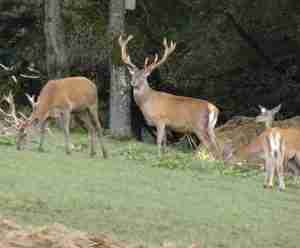
126198601@N08/14787689877
You’re probably wondering why deer have such a reputation among hunters, right?
Well, the numbers don’t lie – data from previous years show an impressive quantity of deer harvested, indicating their popularity as a game species.
Moreover, the meat of deer is not only rich in flavor, it is also a highly nutritious source of protein. While deer’s antlers, used as trophies, symbolize the mastery and accomplishment of a successful hunt.
Statistics of Harvested Deer in the Previous Years
Like a growing tree, the number of harvested deer significantly rose over the years, painting a picture of a flourishing hunting season.
Last season, a whopping 6.3 million white-tailed deer were harvested, the highest since 2011. The buck harvest hit a 21-year high at more than 3 million bucks.
Here’s a closer look at some of the statistics:
- Approximately 41% of the harvested bucks were mature deer, aged 3½ or older.
- Antlerless harvest increased by 12% from the previous season, surpassing the buck harvest for the first time since 2016.
- Texas had the highest total buck harvest at 449,933.
Deer Meat
If you’ve ever tasted venison, you’ll know it’s a cut above the rest in flavor and nutritional value, making it a favorite among hunters and gastronomes. This deer meat is lean and packed with essential nutrients, providing a healthy alternative to other red meats.
| Nutrient | Benefit |
| Protein | Muscle growth and repair |
| Iron | Red blood cell production |
| Zinc | Immune system support |
| B Vitamins | Energy production |
Besides, the versatility of venison is impressive as well. You can grill, roast, stew, or even grind it into burgers or sausages. Embrace the freedom to experiment and indulge in this gastronomic delight; you might just find your new favorite meat.
Dear Trophy
Now, when you’re out in the field, it’s the antlers that you’re really after. They’re not just about size, but their shape and symmetry too.
These three factors can tell you a lot about the buck: age, health, and genetic quality.
Hunting down a mature buck with impressive antlers is no small feat. It’s a sign of your prowess as a hunter and a symbol of the liberty you enjoy in the great outdoors.
White-tailed Deer: The All-American Favorite
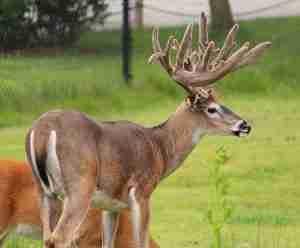
You’ve likely caught sight of the White-tailed Deer, renowned for its characteristic brown fur in summer, grey coat in winter, and of course, the distinctive white underside of its tail.
They’re an All-American favorite, making up the largest deer population in North America, with estimates suggesting around 30 million whitetail deer roam across the continent.
Understanding their characteristics and population distribution can deepen your knowledge and appreciation for this ubiquitous creature.
Characteristics of White-Tailed Deer
Dressed in their reddish-brown summer coat, much like a rustic autumn leaf, white-tailed deer are a sight to behold, and when winter comes, they’re wrapped in a grayish-brown or gray coat, akin to an old sepia photograph.
These deer, native to North America, typically weigh between 100 and 300 pounds, making them a medium-sized species.
| Summer | Winter | |
| Coat Color | Reddish-brown | Grayish-brown or Gray |
| Weight | 100-300 pounds | 100-300 pounds |
| Tail | White underside | White underside |
They’re known for their white tail underside, a unique warning signal. Hunting them is popular, offering you an opportunity for a thrilling yet intimate rendezvous with nature. So, discover the freedom that comes with understanding these fascinating creatures better.
Whitetail Deer Population in North America
If you’re intrigued by the sheer number of white-tailed deer in America, you’ll be astounded to learn that over 30 million of these majestic creatures are scattered across the United States alone!
This enormous population is unevenly distributed, though. It varies greatly between regions, shaped by habitat suitability, hunting regulations, and predator populations.
In essence, the white-tailed deer population in North America is a complex, dynamic system influenced by a range of biological and anthropogenic factors.
Mule Deer: The Majestic Western Beauty
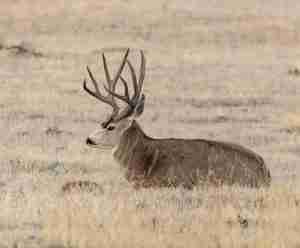
4038873/photo-image-fall-animal
Next up is the majestic gem of the west, the Mule Deer. These species have distinct characteristics from their cousins: large ears resembling a mule, unique bounding gait, and impressive adaptability to diverse habitats.
Characteristics of Mule Deer
When you encounter a mule deer, you’ll instantly notiitseir large, mule-like ears and distinctive black-tipped tail, making them stand out from other deer species.
For instance, while hiking in the Rocky Mountains, you might spot a mule deer camouflaging perfectly with the grayish-brown surroundings, its large ears alert and listening for any signs of danger.
Mule deer are larger than their white-tailed cousins, with males weighing between 150 to 300 pounds. They exhibit the following characteristics:
- Their large, mule-like ears aren’t just for show. They help these deer detect predators, an adaptation crucial for survival in the wild.
- Their grayish-brown coat age is also designed to withstand the harsh climates of their arid and mountainous habitats.
Mule Deer Population in North America
As you traverse the vast landscapes of North America, you’ll likely come across the abundant mule deer population, a testament to the resilience and adaptability of this spectacular species.
Estimated to number between 6 to 7 million, these remarkable creatures’ survival is influenced by habitat availability, predation, and hunting pressure.
Here’s a quick look at some of the factors affecting their population:
| Factor | Negative Impact | Positive Impact |
| Habitat Availability | Development reduces living space | Conservation increases habitat |
| Predation | Predators decrease population | Healthy ecosystems control predator numbers |
| Hunting Pressure | Overhunting lowers numbers | Regulated hunting preserves the population |
Remember, our actions greatly influence the fate of these creatures. Let’s strive for balance and respect for all life in our pursuit of freedom.
Red Deer: The European Trophy
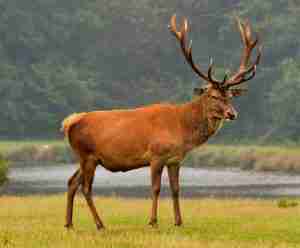
File:Red_Deer_%289663989689%29.jpg
As we focus on Europe, you’ll encounter the impressive Red Deer, a species celebrated by hunters and wildlife enthusiasts. Notable for their striking russet coats and imposing antlers, these deer exhibit various characteristics distinguishing them from their North American cousins.
Spanning from the British Isles across the continent to the forested regions of Russia, the geographical range of Red Deer is as diverse as the landscapes they inhabit.
Characteristics of Red Deer
Sure, they’re not hitting the gym, and downing protein shakes, but Red deer stags can bulk up to a whopping 500 pounds without even touching a weight!
These creatures, native to Europe, Asia, and parts of North Africa, flaunt a rich reddish-brown coat that grows darker in winter, while a pale rump patch adds a dash of contrast. The females, called hinds, are smaller but no less impressive.
To give you a detailed understanding, let’s dig into their characteristics:
| Characteristics | Male (Stags) | Female (Hinds) |
| Weight | Up to 500 pounds | Smaller than males |
| Coat Color | Reddish-brown (darker in winter) | Reddish-brown (darker in winter) |
| Rump Patch | Pale | Pale |
| Antlers | Yes | No |
| Native To | Europe, Asia, North Africa | Europe, Asia, North Africa |
Geographical Range of Red Deer in Europe
You might be surprised that Red deer aren’t just confined to one corner of Europe; they’ve spread their antlers far and wide across the continent!
They’ve made their homes in various landscapes, from the lush woodlands of Germany to the rugged mountainous regions of Norway. Scotland’s moorlands are also a favorite haunt, providing ample feeding grounds for these magnificent creatures.
Ireland, Sweden, Spain, and many other countries also host these adaptable beings. With such a broad geographical range, it’s clear that Red deer are remarkably versatile, able to thrive in various environments.
Roe Deer: The Graceful Woodland Creature

Dive into the world of Roe Deer, a graceful woodland creature known for its nimble agility and captivating beauty.
You’ll find these deer fascinating not only for their unique characteristics, such as their reddish and grey-brown coat but also for the thrill they offer in hunting due to their elusive nature.
Their petite size, swift movements, and the skill required to hunt them make Roe Deer a captivating subject for discussion.
Characteristics of Roe Deer
Donning a summer coat of reddish-brown that shifts to a more modest gray in the winter, the Roe deer’s unique fashion statement is further accentuated by a charming white rump patch.
Let’s not forget those exquisite antlers that both genders proudly display, with the lads showing off a bit more extravagantly.
This species, native to Europe, is renowned for its elegance. They weigh between a modest 30 and 75 pounds, embodying the essence of freedom you seek.
Moreover, Roe deer, scientifically known as Capreolus capreolus, is an exception in the deer family. Females also sport antlers, although smaller and less sturdy than males.
Their unique characteristics reflect the diversity and adaptability of nature, a testament to evolution’s creativity.
The Appeal of Roe Deer in Hunting
There’s no denying it, the allure of hunting Roe deer captivates the heart for the deep connection with nature it fosters and the thrilling challenge it presents.
- Elusiveness: These creatures’ knack for blending seamlessly into their surroundings is enchanting. Their ability to disappear at a moment’s notice adds an element of surprise to the hunt.
- Senses: A Roe deer’s acute olfactory and auditory senses make it a tough target, setting a challenging stage for hunters.
- Agility: Their graceful movements and swift reactions put your hunting skills to the test.
- Culinary Delight: The reward of their tender, flavorful meat is an enticing end to a thrilling chase.
Frequently Asked Questions
How do deer communicate with each other in the wild?
Deer communicate using visual signals, sounds, and scents. They flick their tails, grunt, or leave scent marks. You’ll notice these behaviors when they’re alerting others to danger or during mating season.
What are the main threats to deer population and their habitats?
Habitat loss, climate change, and hunting pressure are key threats to deer populations. They’re losing their homes to deforestation and urbanization.
How do the different types of deer adapt to various climates and environments?
Like a chameleon in the forest, deer adapt to their habitats in fascinating ways. They’ve developed thick coats for cold climates, lean bodies for hot ones, and exceptional hearing and sight for survival in diverse environments.
What is the average lifespan of these different types of deer?
The lifespan of deer varies. White-tailed deer live about 6-14 years in the wild, mule deer around 10 years, and red deer can live up to 18 years. Factors like predation and habitat impact longevity.
Conclusion
Now, you’re through learning the different types of deer in the wild. Each represents a unique symbol, a testament to nature’s diversity, resilience, and elegance.
But remember, it’s not just about the hunt. It’s about understanding, respecting, and preserving these magnificent creatures for generations to come.
- Gun Ranges For Beginners - January 25, 2024
- How To Build Indoor Gun Range: Your Ultimate Blueprint - January 25, 2024
- How To Find the Cheap Shooting Range Near Me? - January 25, 2024

